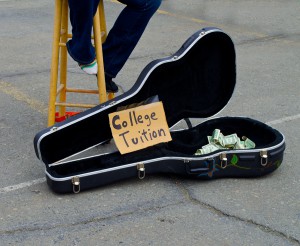 As the number of student loan borrowers continues to rise, so does the amount of borrowers facing struggles replaying the debt.
As the number of student loan borrowers continues to rise, so does the amount of borrowers facing struggles replaying the debt.
An estimated 40 million Americans carry at least one outstanding student loan balance, according to a study from Experian.
While the average loan balance in 2014 was $29,000, according to Experian, a report from the Federal Reserve Bank of New York indicates that debtors most likely to fall behind in repayment are those with smaller amounts of debt.
The Federal Reserve Bank’s report focused on borrowers who are in dire situations – with loans at least 270 days late.
Researchers found two interesting features in the group of loans considered in default. Students whose loans came due in 2009 were more likely than those with earlier loans to be in default. Some 26% of this group ended up in default five years out from school.
Also alarming to bank analysts was the finding that borrowers having the most trouble repaying their debt are those with the least amount owed.
Nearly 34% of default rates, the highest of all groups, are among borrowers who owe less than $5,000, according to the report.
The next highest rate of default was found among borrowers who had balances of less than $10,000.
An estimated 43% of student loans due in 2009 are for less than $10,000.
Explaining the Trend
As those with the lowest amount of debt become those most likely to default, researchers looked for reasons to explain the trend.
Two possible explanations emerged, including the likelihood that some of these borrowers may not have completed their schooling. The other possible explanation is those who are struggling to repay may have earned degrees with lower financial payoffs.
The Ramifications
Students who default on loans face a number of ramifications over the course of their lifetimes.
Student loan debt is treated like all other loans in regard to credit scores. Those who default face difficulty taking out other loans and may find, for example, that it more difficult to buy a home.
In addition, student loan debt can be recovered through wage and tax return garnishment.
While the impact of default on the borrowers can be crippling, Bloomberg Business also points out that the economy also takes a toll.
The New York Fed also released information that reveals for the third year running 30-year-olds with student debt were less likely to take out mortgages than those without it.
Regardless of loan size, defaults leave their scars on not only borrowers, but also the economy as a whole.





